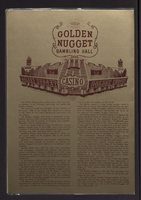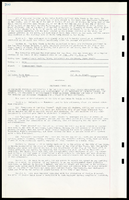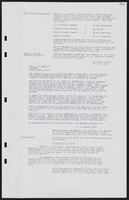Search the Special Collections and Archives Portal
Search Results

Phil Tobin and Jack Summers: photographic film
Date
Archival Collection
Description
Image
Series I: Press coverage, media releases, and casino establishment in Jersey (United Kingdom), 2001-2009
Level of Description
Scope and Contents
This series, dated 2001-2009, was collected by Peter Collins and includes press coverage, interviews, and media releases about legalized gambling, as well as information dealing with casino establishment in Jersey, a British Crown dependency. The majority of the press coverage and releases relate to the United Kingdom (UK), primarily in relation to the passage of legislation and discussion regarding large casino gambling in metropolitan areas of the UK in addition to Jersey.
Archival Collection
Collection Name: Peter Collins Papers on International Gaming
Box/Folder: N/A
Archival Component
Binion's Gambling Hall and Hotel
Authority Link
No description.
Latitude/Longitude
Broader
Feature
Geographic Location
Barr Smith oral history interview
Identifier
Abstract
Oral history interview with Barr Smith conducted by Melvin Smail on February 22, 1980 for the Ralph Roske Oral History Project on Early Las Vegas. In this interview, Smith discusses his personal history and the history of Las Vegas, Nevada. Smith discusses working at the Basic Magnesium plant, playing high stakes poker games with prominent gamblers like "Nick the Greek," and the casinos built on the early Las Vegas Strip. Smith also describes how Las Vegas has changed, the different forms of gambling and gaming available in the city, and life in 1940s Las Vegas.
Archival Collection

Transcript of interview with Sam Earl by Laura Button, March 9, 1981
Date
Archival Collection
Description
On March 9, 1981, Laura Button interviewed Sam Earl (born 1912 in Virgin, Utah) about his life in Nevada. Also present during the interview is Sam’s wife, Melissa Earl. The three discuss a wide range of topics from the early development of Las Vegas, Sam’s work on the Boulder Dam, the Earls’ early residence in a tent, and the family’s religious participation. The interview also covers gambling, Block 16, the first members of the police force, recreational activities, and the Helldorado parade. Sam also talks about his work as a building contractor, including some of the buildings and casino properties he helped build, and the interview moves to a discussion of the development of the Las Vegas Strip. The interview concludes with Sam’s description of his work as a truck driver and a discussion on welfare benefits.
Text





